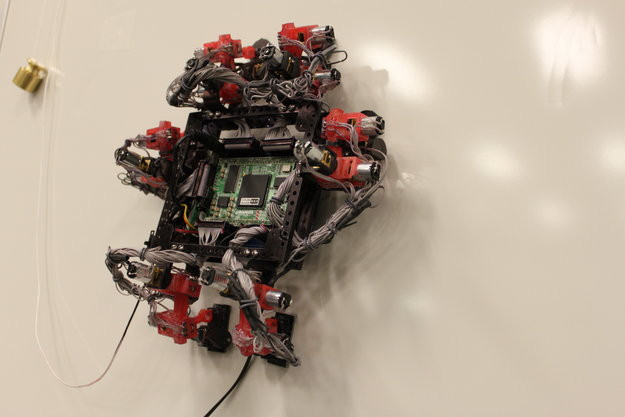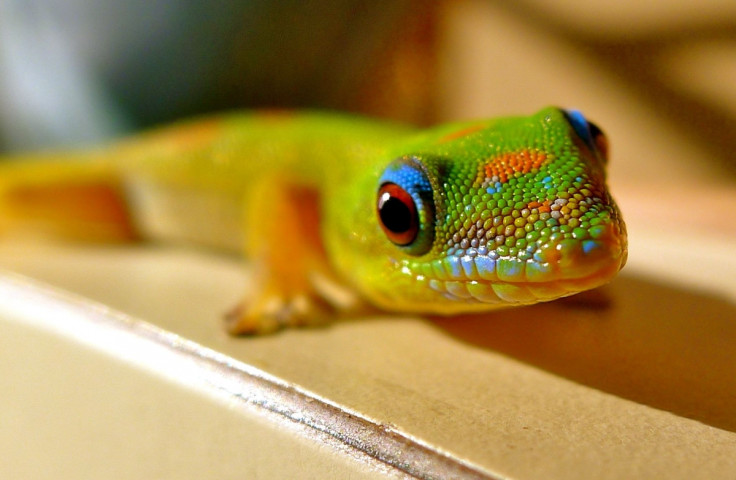Space Lizard Robots Designed as Cosmic Cleaners [VIDEO]

Space lizards with sticky feet have been created to act as cosmic cleaners by the European Space Agency.
The robots have been designed to mimic gecko lizards in order to help clean the outside of spacecrafts.
Researchers at ESA and the Simon Fraser University in Canada believe their 'dry adhesive' materials inspired by geckos could lead to hull-crawling automatons that look after future spaceships.
The scientists applied the material to space vacuum and freezing temperatures and ensured the stickiness was retained.
The feet of the robots, named Abigaille, emulate the adhesiveness of geckos' feet - featuring tiny hairs with ends as small as 11 nanometres across.
Michael Henrey, one of the authors, said: "This approach is an example of 'biomimicry', taking engineering solutions from the natural world.
"We've borrowed techniques from the microelectronics industry to make our own footpad terminators. Technical limitations mean these are around 100 times larger than a gecko's hairs, but they are sufficient to support our robot's weight.
"The reason we're interested in dry adhesives is that other adhesive methods wouldn't suit the space environment. Scotch, duct or pressure-sensitive tape would collect dust, reducing their stickiness over time. They would also give off fumes in vacuum conditions, which is a big no-no because it might affect delicate spacecraft systems.

"Velcro requires a mating surface, and broken hooks could contaminate the robot's working environment. Magnets can't stick to composites, for example, and magnetic fields might affect sensitive instruments."
The team tested the strength of the robot's stickiness at the ESA's Electrical Materials and Process Labs.
Laurent Pambaguian, from the ESA, said that the experiment was successful, meaning "deployment in space might one day be possible".
Henrey said Abigaille is dexterous with six legs that each have four degrees of freedom, meaning the robot could be used in environments unsuitable for a wheeled robot. "For example, it can transition from the vertical to horizontal, which might be useful for going around a satellite or overcoming obstacles on the way."
However, he added that it is unlikely to be put to use on board spacecrafts for some time.
"It's very expensive to upgrade hardware once it is up in space so the idea would be to fly a more general robot in the first place. This could then be adapted through software upgrades for different tasks that weren't anticipated at the start of the project."
© Copyright IBTimes 2024. All rights reserved.























